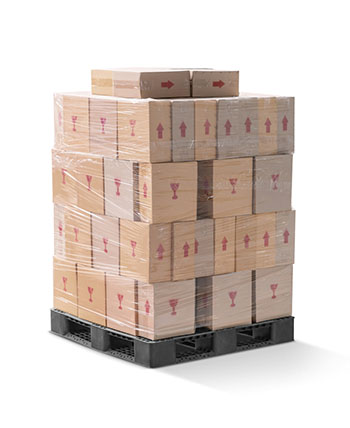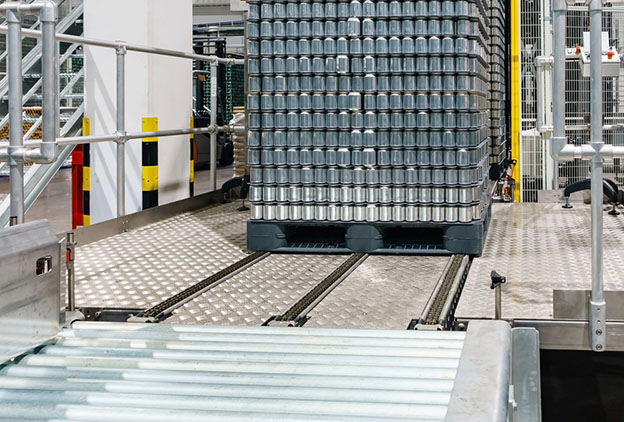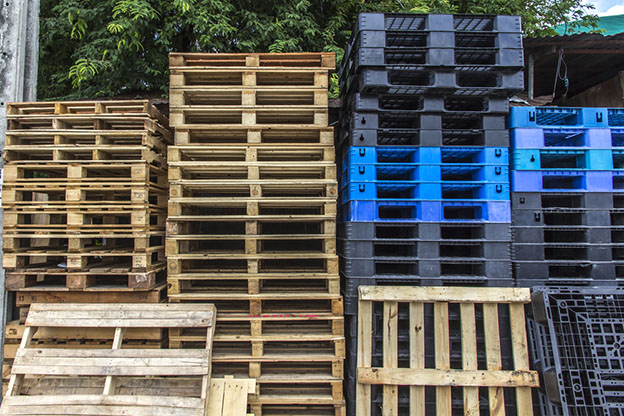Source: NavinTar/Shutterstock.com
Pallets are the backbone of any warehouse. They help you stack, ship and store your products safely as they make their way to their destination. If you’re new to pallets, you might be unfamiliar with the term “palletizing.” Essentially, this means getting your products and merchandise ready for pallet transportation. Simply strapping your containers to a pallet isn’t enough. You should take a moment to make sure the package has been prepped for the journey ahead.
Learn more about palletizing and how it can help your business.
What Is Palletizing?
Palletizing means using pallets to ship, store and organize your goods. Every shipment or container should be attached to a certain pallet. For more peace of mind, label individual pallets according to their contents to make sure they don’t get separated throughout the journey. Put a pallet in between large containers and shipments so your workers can use a forklift to retrieve individual packages.
Industrial Wire Baskets Help Keep Warehouses Organized
In addition to using pallets, it’s best to prep your merchandise and containers for proper storage and handling. This means making sure your packages and pallets are stable so they don’t topple over along the way. Use these tips to properly palletize your inventory:

Source: F16-ISO100/Shutterstock.com
Tips for Palletizing Your Products
- Fill every container until it is full. Empty space can be a hazard during transit. Some packages may lean or topple over if there is too much weight on one side.
- Spread out the weight as much as possible to keep the pallet centered. If one package is heavier than the others, place it in the middle of the pallet.
- Keep the heaviest items on the bottom. Avoid putting too much weight on the top of the pallet, as this can lead to swaying and sudden shifts in weight that may injure one of your employees.
- It’s best to keep your merchandise visible as much as possible when using pallets. This makes it easy to monitor the contents of the container. Workers will be able to see whether the contents have shifted during transit. They can then address any issues before attempting to move or handle the pallet. Industrial wire baskets keep inventory out in the open, helping your team see what they are doing when working with pallets.
- Use a two-dimensional palletizing procedure for warehouse loading operations. This will help you improve your approach to stacking and loading. Your packages will then stay intact from point A to point B. Overloading certain pallets and underutilizing others can lead to hazards in the workplace.
- Fill any gaps in between packages and containers. Individual items may slide around if there is space in between. This can also make the weight uneven. If the package is irregularly sized, it may be better to transport it individually.
- Wrap individual boxes and containers together so they are a cohesive unit before attaching them to the pallet. Use shrink wrap to prevent the boxes from moving during transit. Wrap tightly to make sure smaller boxes and containers do not slip out.
- Avoid using cardboard boxes and other types of flimsy containers. It’s best to use those made of plastic, wood or metal instead. Cardboard boxes can easily fall apart during transit. Excess weight may crush the box underneath, shifting the weight of the load.
Plastic vs. Wood
Plastic Pallets Are Durable and Sustainable
Switch to plastic pallets as much as possible. Plastic pallets are considered much more durable than their wooden counterparts. They won’t fall apart in the workplace so your workers don’t have to worry about stepping on wood chips and debris throughout the day.
Source: Thaisucculents/Shutterstock.com
Wood pallets must be inspected at international borders to prevent the spread of wood-borne pests. Plastic pallets retain their overall shape and dimensions so your team can handle products with ease. Wooden pallets are also harmful to the environment. Studies show that pallet production uses 43 percent of hardwood and 15 percent of softwood produced in the U.S.
Use plastic pallets for a more sustainable business model. You can also use aluminum or steel pallets for even more peace of mind on the road. These are some of the most durable pallets money can buy. Learn about the differences between galvanized steel vs. aluminum pallets.
There are so many ways to prepare your goods for delivery, but pallets are almost always the best choice. Your employees can easily move hundreds of pounds of merchandise with a forklift instead of trying to move dozens of smaller containers by hand. Use these palletization tips to make sure your products are ready for the road ahead.

